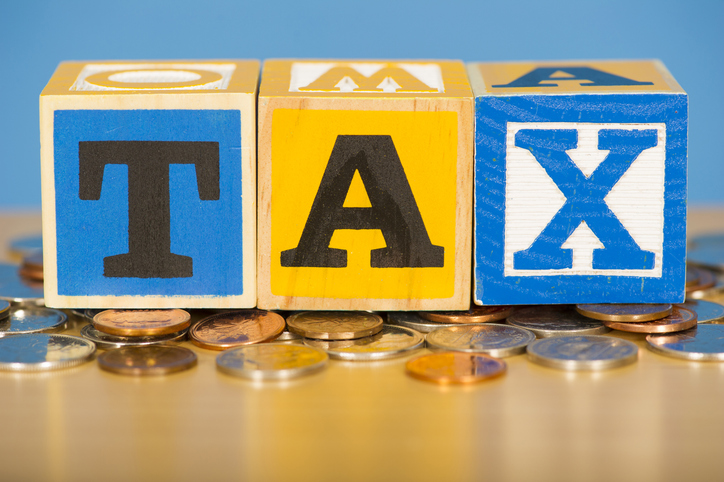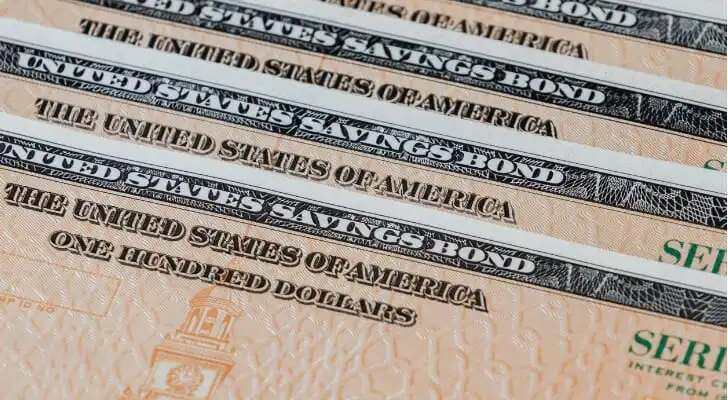Savings bonds can be a safe way to save money for the long term while earning interest. You might use savings bonds to help pay for your child’s college education, for example, or to set aside money for your grandchildren. Once you redeem them, you can collect the face value of the bond along with any interest earned. While interest on savings bonds is taxable, there are a few things you can do to minimize your liability.
A financial advisor can help you create a plan to manage taxes on your investments.
How Savings Bonds Work
The U.S. Treasury issues savings bonds, most commonly a type of bond known as Series EE bonds. These electronically issued bonds earn interest for up to 30 years. Depending on when you purchase Series EE bonds, they may earn either a fixed or variable interest rate.
You can buy up to $10,000 of EE bonds each year per Social Security number, based on the first named owner on the bond. So, for example, if you were purchasing EE bonds, you could buy $10,000 for yourself and $10,000 for your child, as long as your child was listed as the first owner on that bond.
When Do You Pay Taxes on Savings Bond Interest?
Whether you have to pay taxes on savings bonds depends on who owns it. Generally, taxes are owed on interest earned if you’re the only bond owner or you use your own funds to buy a bond that you co-own with someone else, such as a child.
If you buy a bond but someone else is named as its only owner, they would be responsible for the taxes due. When you co-own a bond with someone else and share in funding it, or if you live in a community property state, you’d also share responsibility for the taxes owed with your co-owner or spouse.
As for the timing of when you’ll pay taxes, the Treasury gives you two options for reporting the interest earned:
- Report interest each year as it accrues and pay taxes on it annually
- Defer reporting interest until the bond matures or is redeemed, or if you give up ownership of a bond or become the owner of a reissued bond
According to the Treasury Department, it’s typical to defer reporting interest until you redeem bonds at maturity. With electronic Series EE bonds, the redemption process is automatic and interest is reported to the IRS. Interest earnings on bonds are reported on IRS Form 1099-INT.
It’s important to keep in mind that savings bond interest is subject to more than one type of tax. If you hold savings bonds and redeem them with interest earned, that interest is subject to federal income tax and possibly federal gift taxes (for 2026, the annual gift tax exclusion is $19,000 per individual or $38,000 per married couple filing jointly). You won’t pay state or local income tax on interest earnings, but you may pay estate or inheritance taxes if those apply where you live.
How Can I Avoid Paying Taxes on Savings Bonds?

While Treasury bonds are generally taxable, there are exceptions, particularly when the bond is used to pay for higher education. You can do this by taking advantage of the education exclusion or by rolling savings bonds into a college savings account, like a 529 plan.
Use the Education Exclusion
You can skip paying taxes on interest earned with Series EE and Series I savings bonds if you’re using the money to pay for qualified higher education costs. That includes expenses you pay for yourself, your spouse or a qualified dependent.
Only certain qualified higher education costs are covered, including:
- Tuition
- Fees
- Some books
- Equipment, such as a computer
You can still use savings bonds to pay for other education expenses, such as room and board or activity fees, but you wouldn’t be able to avoid paying taxes on interest. Any money from a savings bond redemption that doesn’t go toward higher education expenses can still be taxed at a prorated amount.
Additionally, there are a few other rules that apply when using savings bonds to pay for higher education:
- Bonds must have been issued after 1989.
- Bond owners must have been at least 24 years of age at the time the bonds were issued.
- Education costs must be paid using bond funds in the year the bonds are redeemed.
- Funds must be used to pay for expenses at a school that’s eligible to participate in federal student aid programs.If you’re married, you and your spouse must file a joint return to take advantage of the education exclusion.
There are also income thresholds you need to observe. For tax year 2026 (which you will file in 2027), if you’re married filing jointly, this tax break begins to phase out when modified adjusted gross income (MAGI) exceeds $152,650 and is fully phased out after $182,650. For single filers and heads of household, the 2025 phase-out begins at $101,800 and ends at $116,800.
For a comparison, if you’re married and filed a joint return in tax year 2025, the tax break started to phase out when MAGI exceeded $149,250, and completely phased out after $179,250. For heads of households and single filers, the 2025 phase-out started at $99,500 and completely phased out after $114,500.
Roll Savings Bonds into a College Savings Account
Another strategy for how to avoid taxes on savings bond interest involves rolling the money into a college savings account. You can roll savings bonds into a 529 college savings plan or a Coverdell Education Savings Account (ESA) to avoid taxes.
There are some advantages to either approach. With a 529 college savings plan, you can continue saving money on a tax-advantaged basis for higher education. You won’t pay any taxes on money that’s withdrawn for qualified education expenses. If you have multiple children, you can reassign the account to a different beneficiary if one child decides they don’t want to go to college or don’t use up all the money in the account.
Contributions to 529 college savings accounts aren’t tax-deductible at the federal level, though some states do allow you to deduct contributions. You don’t have to live in any particular state to invest in that state’s 529, and plans can have very generous lifetime contribution limits. Keep in mind that gift tax exclusion limits still apply to any money you add to a 529 every year. Coverdell ESAs have lower annual contribution limits, capped at $2,000 per child. You can contribute on behalf of a child up to their 18th birthday. Withdrawals are tax-free when the money is used for qualified education expenses. But you typically have to withdraw all the funds by age 30 to avoid a tax penalty.
Bottom Line

Though savings bonds typically offer a lower rate of return compared to stocks, mutual funds and other higher risk securities, they allow you to reliably earn interest over the long term. However, the interest earned is taxable. Minimizing the taxes you pay on that interest may be possible if you have children and plan to use some or all of your savings bonds to help pay for college. When bond funds are used for qualified education expenses or rolled over into a 529 plan or ESA, you may avoid taxes on savings bond interest.
Investing Tips
- Consider working with a financial advisor about how much money you should keep in stocks, bonds and cash equivalents. Finding a financial advisor doesn’t have to be hard. SmartAsset’s free tool matches you with vetted financial advisors who serve your area, and you can have a free introductory call with your advisor matches to decide which one you feel is right for you. If you’re ready to find an advisor who can help you achieve your financial goals, get started now.
- Savings bonds purchased on behalf of grandchildren don’t receive the same tax treatment for higher education purposes. Generally, the education exclusion only applies if the grandparent is claiming a grandchild on their taxes as a dependent. If your parents are interested in helping pay for your child’s college expenses, you may encourage them to open a 529 college savings account instead, then roll the bonds into it to avoid paying taxes on interest earned.
Photo credit: ©iStock.com/JJ Gouin, ©iStock.com/stockstudioX, ©iStock.com/larryhw
